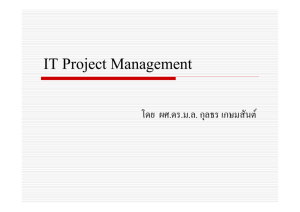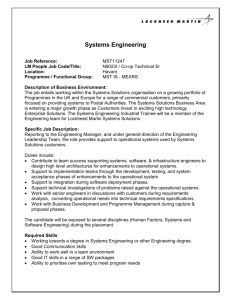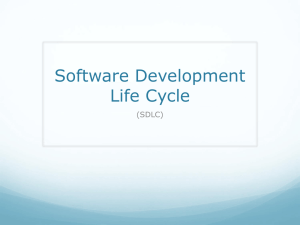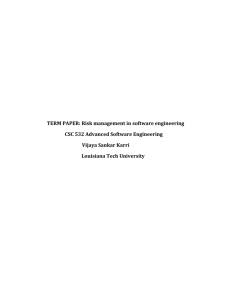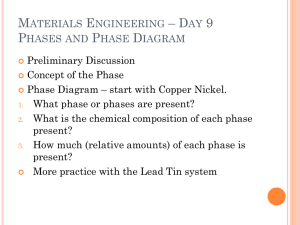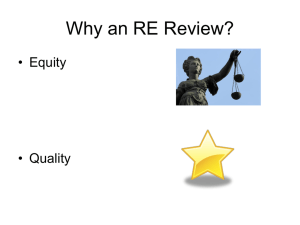Project phases and the life cycle
advertisement
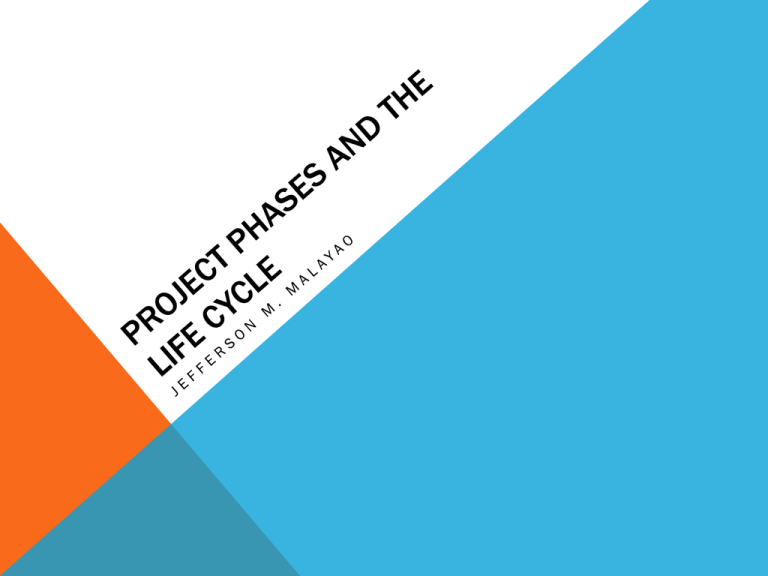
PROJECT LIFE CYCLE Project life cycle - is a collection of project phases. • Some organizations specify a set of life cycles for use on all of their projects, while others follow common industry practices based on the types of projects involved. • In general, project life cycles define what work will be performed in each phase, what deliverables will be produced and when, who is involved in each phase, and how management will control and approve work produced in each phase. Deliverable – is a product or service, such as a technical report, a training session, a piece of hardware, or a segment of software code, produced or provided as part of a project. • It is much more expensive to make major changes to a project during latter phases. • During the middle phases of a project life cycle, the certainty of completing a project improves as a project continues, more information is known about the project requirements and objectives, and more resources are usually needed than during the initial or final phase. • The final phase of a project focuses on ensuring that project requirements were met and that the project sponsor approves completion of the project. • Project phases vary by project or industry, but some general phases in traditional project management are often called the concept, development, implementation, and close-out phases. TRADITIONAL LIFE CYCLE • The first two traditional phases (concept and development) focus on planning and are often referred to as project feasibility. • The last two phases (implementation and closed-out) focus on delivering the actual work and are often referred to as project acquisition. • A project should successfully complete each phase before moving on to the next. • This project life cycle approach provides better management control and appropriate links to the on-going operations of the organization. • In the concept phase of a project , managers usually develop some type of business case, which describes the need for the project and basic underlying concepts. • A preliminary or rough cost estimate is developed in this first phase, and an overview of the work involved is created. • A work breakdown structure (WBS) outlines project work by decomposing the work activities into different level of tasks. The WBS is a deliverable-oriented document the defines the total scope of the project. • After the concept phase is completed, the next project phase-development----begins. • In the development phase, the project team creates more detailed project management plans, a more accurate cost estimate, and a more thorough WBS. • The third phase of the traditional project life cycle is implementation. In this phase, the project team creates a definitive or very accurate cost estimate, delivers the required work., and provides performance reports to stakeholders. • The last phase of the traditional project life cycle is closed-out. In the closed-out phase, all of the work is completed, and there should be some sort of customer acceptance of the entire project. The project team should document its experiences on the project in a lessons-learned report. • Many projects, however, do not follow this traditional project life cycle. They still have general phases with some similar characteristics as the traditional project life cycle but they are much more flexible .For example, there may be just three phases, the initial, intermediate, and final phase. • Just as a project has a life cycle, so does a product. Information technology projects help produce products and services such as new software, hardware, networks, research reports, and training on new systems. Understanding the product life cycle is just as important to good project management as understanding the phases of the traditional project life cycle. PRODUCT LIFE CYCLE • A program often refers to the creation of a product, like an automobile or a new operating system, therefore developing a product often involves many projects. • All products follow some type of life cycle-cars, buildings, even amusement parks. The Walt Disney Company, for example, follows a rigorous process to design, build, and test new products. They assign project managers to oversee the development of all new products, such as rides, parks, and cruise lines. Likewise, many automotive companies follow product life cycles to produce new cars, trucks, and other products. SYSTEMS DEVELOPMENT LIFE CYCLE • SDLC -is a framework for describing the phases involved in developing information systems. • Some popular models of an SDLC include the waterfall model, the spiral model, the incremental build model, the prototyping model, and the Rapid Application Development (RAD) model. • These life cycle models are examples of a predictive life cycle, meaning that the scope of the project can be clearly articulated and the schedule and cost can be accurately predicted. • Waterfall life cycle- has well-defined, linear stages of systems analysis, design, construction, testing, and support. This life cycle model assumes that requirements will remain stable after they are defined. • The spiral life cycle model was developed based on experience with various refinements of the waterfall model as applied to large government software projects. I t recognizes the fact that most software is developed using an iterative or spiral approach rather than linear approach. • The incremental build life cycle model provides for progressive development of operational software, with each release providing added capabilities. • The prototyping life cycle model is used for developing software prototypes to clarify user requirements for operational software. • The RAD life cycle model uses an approach in which developers work with an evolving prototype. This life cycle model also requires heavy user involvement and helps produce systems quickly without sacrificing quality. • In contrast to the predictive life cycle models, the Adaptive Software Development (ASD) life cycle model assumes that software development follows an adaptive approach because the requirements cannot be clearly expresses early in the life cycle. • An adaptive approach is also used to provide more freedom than the prescriptive approaches. • Important attributes of this approach are that the projects are mission driven and component based, using time-based cycles to meet target dates. Requirements are developed using an iterative approach , and development is risk driven and change tolerant to address and incorporate rather than mitigate risks. IMPORTANCE OF PROJECT PHASES AND MANAGEMENT REVIEWS • Due to the complexity and importance of many information technology projects and their resulting products, it is important to take time to review the status of a project ta each phase. • A project should successfully pass through each of the main project or product phases before continuing to the next. • Since the organization usually commits more money as a project continues, a management review should occur after each phase to evaluate progress, potential success, and continued compatibility with organizational goals. • These management reviews called phase exits or kill points, are very important for keeping projects on track and determining if they should be continued, redirected or terminated.
